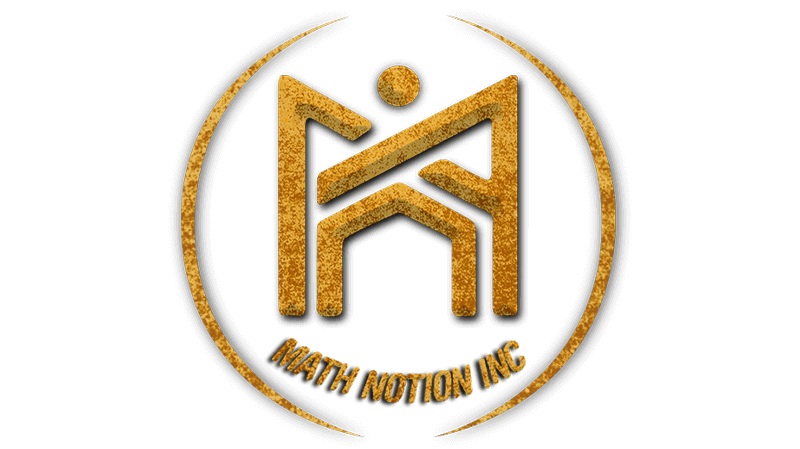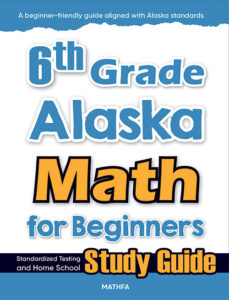
Study Time: 3minutes
6th Grade Alaska Math for Beginners: A Complete Guide to Building Strong Foundations
When it comes to laying a strong academic foundation, mastering math in the 6th grade is one of the most critical milestones for students in Alaska. The transition from elementary to middle school brings new challenges, and math becomes more complex and abstract. That’s why this guide to 6th Grade Alaska Math for Beginners is designed to help students, parents, and teachers understand the standards, expectations, and effective strategies to build confidence and skills in mathematics.
Understanding 6th Grade Alaska Math Standards
The Alaska Mathematics Standards outline what students should know and be able to do at each grade level. In the 6th grade, these standards are aligned with national expectations while also reflecting the unique context and needs of Alaskan learners.
Key areas covered in 6th Grade Alaska Math for Beginners include:
- Ratios and Proportional Relationships
- The Number System
- Expressions and Equations
- Geometry
- Statistics and Probability
Each of these domains lays the groundwork for success in higher math and real-world problem solving.
Why 6th Grade Math Matters in Alaska
Math is more than just numbers. For Alaskan students, understanding math at this level sets the stage for future success in science, technology, engineering, and beyond. Whether students live in urban areas like Anchorage or in remote villages, 6th-grade math teaches them logical thinking, problem-solving, and analytical skills.
6th Grade Alaska Math for Beginners ensures that all students, regardless of location or background, are given the tools to thrive academically.
Breaking Down the Core Concepts
Let’s take a closer look at the five key domains of 6th Grade Alaska Math for Beginners:
1. Ratios and Proportional Relationships
Students learn how to understand and use ratios to describe relationships between quantities. For example, they learn how to solve real-world problems involving proportions, rates, and percentages.
2. The Number System
This domain introduces positive and negative numbers, number lines, and operations with fractions and decimals. Mastering this concept is essential for success in algebra and beyond.
3. Expressions and Equations
Students begin to work with variables, algebraic expressions, and simple equations. They learn how to write and solve equations that model real-world problems.
4. Geometry
Students explore concepts such as area, surface area, volume, and angles. Geometry in the 6th grade also focuses on reasoning and precise mathematical language.
5. Statistics and Probability
Students learn how to collect, organize, and interpret data. They understand concepts of mean, median, mode, and range, and begin to make sense of data distributions.
Effective Strategies for Teaching and Learning 6th Grade Alaska Math
To help students grasp these foundational concepts, it’s important to use strategies tailored to diverse learning needs and cultural backgrounds.
Hands-On Learning
Using visual aids, manipulatives, and interactive tools helps students better understand abstract math concepts.
Real-World Applications
Teaching math in the context of real-world Alaskan life—like measuring snowfall, budgeting for groceries, or calculating travel time between villages—makes learning more relevant.
Technology Integration
Online platforms like IXL, Khan Academy, and state-specific resources provide interactive practice that aligns with the 6th Grade Alaska Math for Beginners curriculum.
Encouraging a Growth Mindset
It’s crucial to remind students that making mistakes is part of learning. Encouraging perseverance helps build resilience and confidence in math.
Parental Support in 6th Grade Alaska Math
Parents play a vital role in reinforcing learning outside the classroom. Here’s how they can support their child in 6th Grade Alaska Math:
- Set a Homework Routine: Designate a quiet space and consistent time for math homework.
- Ask Open-Ended Questions: Instead of asking if the homework is done, ask what they learned today or what part was challenging.
- Use Math in Daily Life: Involve your child in activities that require math, like cooking or shopping.
Assessment and Progress Tracking
In Alaska, student progress is assessed through classroom tests, quizzes, and statewide assessments such as the PEAKS (Performance Evaluation for Alaska’s Schools) test. Monitoring progress helps identify strengths and areas for improvement.
Tools like progress charts, student portfolios, and online dashboards can track a student’s journey through 6th Grade Alaska Math for Beginners.
Resources for 6th Grade Alaska Math for Beginners
Here are some valuable resources for students, parents, and educators:
- Alaska Department of Education and Early Development (DEED): Provides curriculum guides and standards.
- Khan Academy: Free lessons aligned with 6th-grade topics.
- Math Notion: Offers targeted practice tests, worksheets, and math books for Alaska standards.
- Prodigy Math Game: A fun way to reinforce math concepts through gameplay.
Common Challenges and How to Overcome Them
Even with the best support, students may face challenges:
- Math Anxiety: Create a low-pressure environment where students feel safe making mistakes.
- Learning Gaps: Address gaps early with targeted interventions.
- Limited Access to Technology: Schools and communities can work together to provide access to devices and internet.
Conclusion
Mastering 6th Grade Alaska Math for Beginners is not only about passing tests—it’s about developing the skills and confidence to tackle more complex math in the future. With a strong support system, culturally relevant teaching, and access to the right tools and strategies, every student in Alaska can succeed.
The path to mathematical success starts in 6th grade. By understanding the standards, practicing consistently, and engaging with math in meaningful ways, students can thrive in school and beyond.
6th Grade Alaska Math for Beginners is more than a curriculum—it’s a journey into the world of problem solving, critical thinking, and future readiness.


